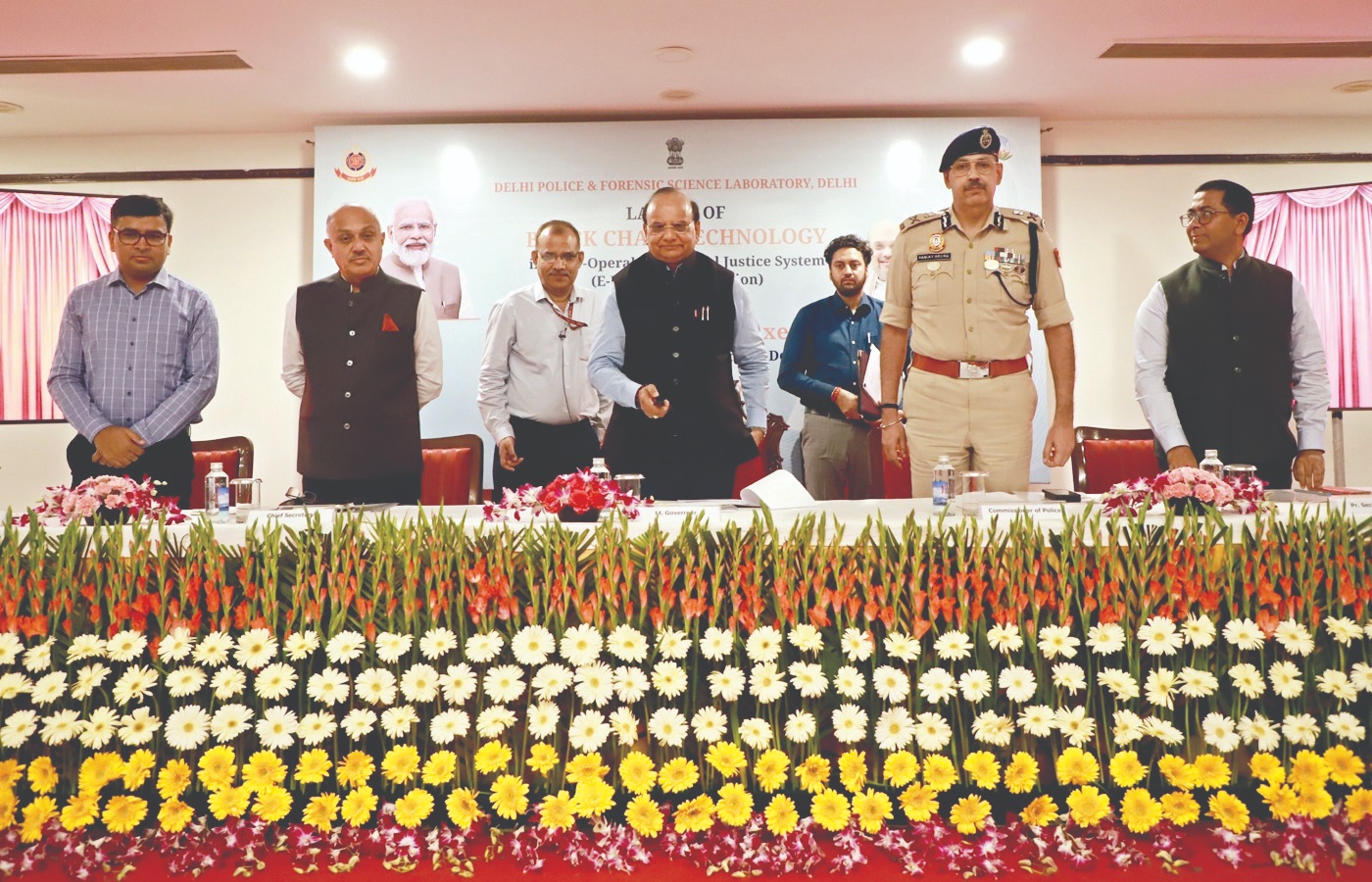New Delhi
In a major reform in collecting and analysing critical evidence from crime spots, the police will now use blockchain technology.
The integration of this technology with DFSL›s (Delhi Forensic Science Laboratory) e-forensic app will ensure the collected evidence remains free from human interference and will not be tempered
This integration was launched by Delhi Lieutenant Governor V.K. Saxena on Thursday at Raj Niwas. Speaking on this launch, Lt. Governor V.K. Saxena said, «With the launch of this technology, DFSL and Delhi Police became the first institutions to implement this technology for collecting temper-free evidence.» He also thanked Home Minister Amit Shah for spearheading the technology boost for criminal investigation and justice delivery throughout the country. Blockchain technology is the demand of the hour as it ensures minimum human interference and will ensure the speedy collection and storage of information for an infinite time. According to officials, blockchain technology will ensure the automation of the entire forensic work and will also maintain privacy by not disclosing the FIR and names of the parties, as these things are not required while filing evidence in it.
According to officials, it will work in several blocks, and each step taken during the interrogation will form a separate block. This first block will have preliminary information about the crime. The next block will have information regarding the FIR, the investigating officer, and the jurisdiction of the police station. The next block will have information regarding the forensic reports and data. And this chain of blocks will continue until the final report is tabled. This will reduce overall human interference, and since things will be stored on different computers, it will be impossible to hack or tamper with the data. Earlier, the information was stored in CCTNS (Crime and Criminal Tracking Network and System), a portal linked to ICJS (interoperable Criminal Justice System), but now that ICJS has been linked to an e-forensic app, it will be stored here in blockchains. The thing that makes it unique is that the Investigating Officer will not get access to forensic details, and the forensic experts will not get information about the case they are examining. This information will only be available once the final report is submitted. It will ensure that the reports from both ends remain neutral and unbiased, based on facts.

